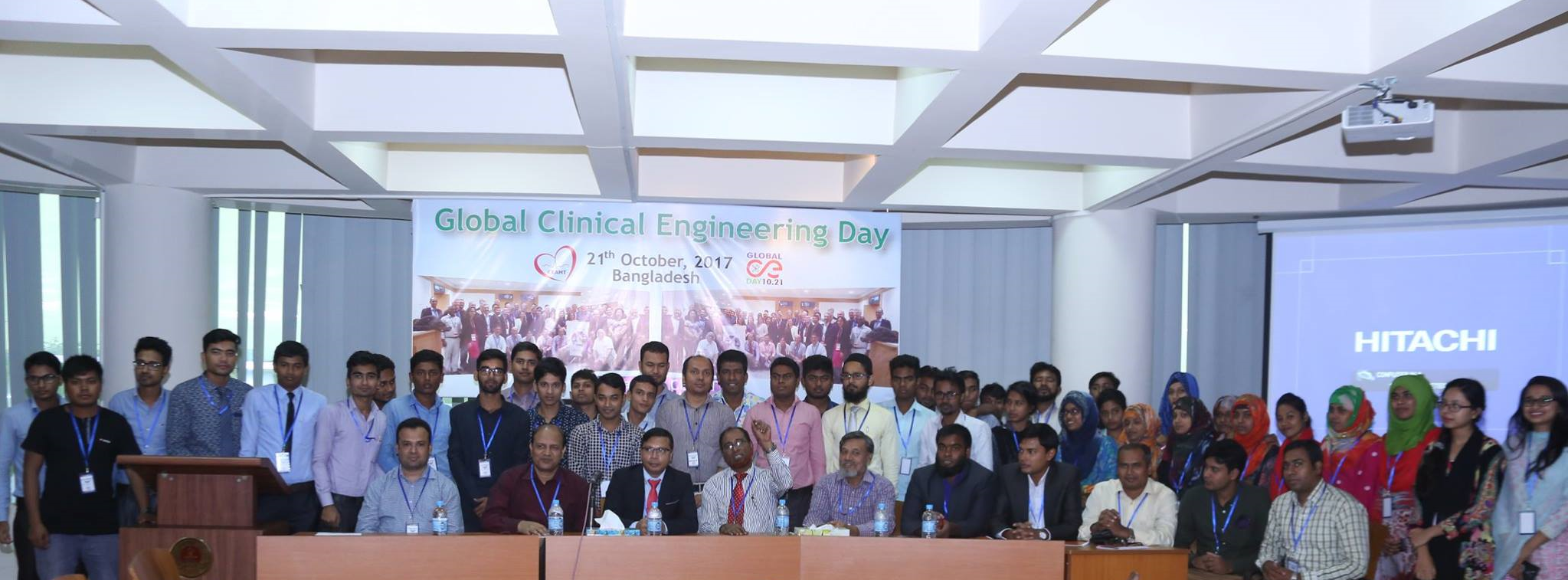History of Clinical Engineering Association- Bangladesh
History of Clinical Biomedical Engineering in Bangladesh and the Establishment of CEAB
Early Development of Biomedical Engineering at KUET
The journey of Biomedical and Clinical Engineering in Bangladesh began in 2007, when the Department of Biomedical Engineering was introduced at Khulna University of Engineering & Technology (KUET) under the Faculty of Electrical and Electronic Engineering (EEE). This pioneering initiative opened the door for advanced education in Biomedical Engineering, offering postgraduate degrees such as M.Sc. Engineering, M.Phil., and Ph.D.
At the outset, only one lecturer, Mr. Mynul Islam, was appointed, holding a B.Sc. in Electrical and Electronic Engineering from KUET. Under the dynamic leadership of Prof. Dr. Mohiuddin Ahmad, three students were admitted into the first M.Sc. Biomedical Engineering program. All three completed their studies successfully, with two later pursuing Ph.D. programs abroad. Among them was Dr. Engr. Md. Anwar Hossain, serving as Biomedical Engineering Manager at the Ministry of Health and Family Welfare since 1992, who aspired to build global collaborations for Bangladesh.
Global Connections and FFACE-2012
In 2012, the Osaka Jikei College in Japan organized the First Forum of Asian Clinical Engineering (FFACE-2012), an international platform promoting Clinical Engineering across Asia. Bangladesh was represented by Dr. Md. Anwar Hossain and Mr. A.B.M. Siddique, whose research paper was accepted and published at the forum.
In the same year, Dr. Hossain completed his M.Sc. in Biomedical Engineering at KUET under Prof. Ahmad. Although he received a Ph.D. scholarship offers abroad, family and service obligations kept him in Bangladesh. He instead joined KUET’s Ph.D. program with government approval, continuing under Prof. Ahmad’s supervision.
Research Focus in Clinical Engineering in Bangladesh
During his doctoral research, Prof. Ahmad and Associate Professor Md. S. U. Islam encouraged Dr. Hossain to focus on developing Clinical Engineering services in Bangladeshi hospitals. International communications with Mr. Kazuo Umekage, Secretary of Osaka Jikei College, further strengthened the idea of establishing an Institute of Clinical Engineering and Technology (ICET) at KUET to train Clinical Engineers (CEs) and Clinical Engineering Technicians (CETs). A project proposal was drafted and submitted to Osaka Jikei College, NEMEMW & TC, and the Ministry of Health & Family Welfare.
International Engagement and Policy Dialog
Although the ICET initiative slowed due to national constraints, momentum resumed in 2015 when a Bangladesh delegation attended ICEHTMC-2015 in Hangzhou, China. There, Dr. Hossain presented the status of Clinical Engineering in Bangladesh, drawing attention from international leaders including Dr. Yadin David, WHO Representative A. Hamid, and delegates from JACET.
Subsequent meetings in China and Bangladesh advanced these collaborations. A landmark policy meeting was held at the Ministry of Health & Family Welfare Secretariat, Dhaka, on 19 February 2016, attended by 25+ representatives from ministries and healthcare organizations. Dr. Hossain’s motivational presentation—supported by Dr. A.K.M. Rahman and Mr. Hamid—garnered 99% approval for establishing a Clinical Engineering and Health Technology (CEAHT) framework to modernize Bangladesh’s healthcare delivery.
Proposal for NCED and CED
Following this milestone, Dr. Hossain submitted a proposal to upgrade the National Electro-Medical Equipment Maintenance Workshop & Training Center (NEMEMW & TC) into the National Clinical Engineering Directorate (NCED), and transform the Diploma in Electro-Medical Engineering (DEME) into a Clinical Engineering Directorate (CED). The proposal recommended recruiting over 450 technical professionals to strengthen healthcare technology management nationwide.
On 25 June 2016, a final review meeting was held at NEMEMW & TC to finalize the draft for establishing CEAB. Prepared by Dr. Hossain, the draft was reviewed and endorsed by Prof. Dr. Mohiuddin Ahmad, Dr. A.K.M. Rahman, and other key participants.
Establishment of CEAB
On 10 October 2017, the Clinical Engineering Association of Bangladesh (CEAB) was officially launched with government approval. Since then, CEAB has gained both national and international recognition as a professional body advancing Clinical Engineering and Healthcare Technology Management (HTM) in Bangladesh.
Additional Contributions
Several individuals played vital roles in CEAB’s establishment:
• Engr. Ziad Rana – Developed the official CEAB website.
• Engr. Mursed Anwar Apu – Coordinated membership registration and data collection.
• Engr. Ariful Islam Arif – Assisted in securing CEAB’s government certification.
Their contributions ensured CEAB’s strong organizational foundation, visibility, and credibility.
Founding Members of CEAB
1. Prof. Dr. Mohiuddin Ahmad – President
2. Dr. A. K. M. Mukhlesur Rahman – Vice President
3. Dr. Engr. Md. Anwar Hossain – General Secretary
4. Engr. Nazrul Islam
5. Engr. Md. Babul Mia
6. Dr. Md. Delwar Hossain
7. Engr. Md. Shafiqul Islam
8. Engr. Md. Mostafa Kamal
9. Engr. Mursed Anwar Apu
Growth in CEAB Membership
Since 2017, CEAB has expanded rapidly as a professional platform. According to official data, CEAB now has 86+ registered members representing universities, government agencies, hospitals, vendors, and private organizations across Bangladesh.
This growth demonstrates CEAB’s role as an active and recognized professional community, serving as a national hub for engineers, educators, researchers, and policymakers dedicated to advancing Clinical Engineering and HTM in Bangladesh.

Share This


Author Comments